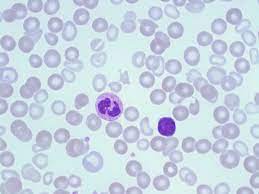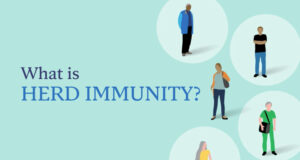Lymphocytes are an important part of the immune system. They help protect the body from infection and disease. There are three types of lymphocytes: B cells, T cells, and natural killer cells. Each type has a specific role in protecting the body. Lymphocytes are produced in the bone marrow and travel to the lymph nodes and other organs to do their job. In this blog post, we will discuss the role of lymphocytes in hospital and healthcare settings.
Let’s get started.
An Overview of Lymphocytes
Lymphocytes are a type of white blood cell. They are made in the bone marrow and circulate in the blood. They are an important part of the immune system. They help protect the body from infection and disease. There are three types of lymphocytes: B cells, T cells, and natural killer cells. Each type has a specific role in protecting the body. Lymphocytes are produced in the bone marrow and travel to the lymph nodes and other organs to do their job.
Without lymphocytes, we would be more susceptible to illness and disease. AskApollo is an excellent health library that you can refer to for more details about such disease and how it is treated.
What is the Function of Lymphocytes?
Lymphocytes develop from stem cells in the bone marrow (the soft, spongy tissue inside some bones). They circulate around the body in the bloodstream and lymphatic system and are important for fighting infection and disease. There are two main types of lymphocytes: B-cells and T-cells. B-cells produce antibodies, which help to destroy bacteria and viruses. T-cells kill infected cells and help to control the immune response.
Lymphocytes are important in hospital settings because they help to protect patients from infection. Healthcare workers can also be exposed to diseases, so they must have a strong immune system.
Causes of lymphocytosis
It is particularly prevalent in those who have:
- Had an illness recently
- An adverse drug interaction
- A medical ailment, such as arthritis that results in persistent inflammation
- Severe medical conditions, such as trauma
- Several cancers, including leukemia and lymphoma
- Removed their spleen
Specific Causes of lymphocytosis are
- Chronic lymphocytic leukemia
- Cytomegalovirus (CMV) infection
- Acute lymphocytic leukemia
- Hepatitis A
- Hepatitis B
- Hepatitis C
- Hypothyroidism (underactive thyroid)
- HIV/AIDS
- Mononucleosis
- Lymphoma
Cancer
Cancer is one of the major causes of Lymphocytosis. Cancers that cause lymphocytosis include:
- Large granular lymphocyte leukemia
- Non-Hodgkin lymphoma
- Chronic lymphocytic leukemia
- Acute lymphoblastic leukemia
Other viral infections
- Mumps
Mumps is a contagious viral infection that is spread through saliva or mucus. It can cause fever, headache, and swollen lymph nodes. Sometimes, it can also lead to meningitis, encephalitis, or deafness. Mumps is most commonly diagnosed in children between five and nine. However, it can also occur in adults. The best way to prevent mumps is to get the measles-mumps-rubella (MMR) vaccine.
- Syphilis
Syphilis is a transmitted infection (STI) caused by the bacterium Treponema pallidum. It can cause severe and long-term health problems if it’s not treated. It can cause Lymphocytes.
- Tuberculosis
Tuberculosis (TB) is a severe infection that usually attacks the lungs. It can be deadly if not treated properly. Hospital-acquired TB (HATB) is a major problem in healthcare settings. People with TB often have weakened immune systems and are more likely to develop severe symptoms like Lymphocytes.
- Whooping Cough
Whooping cough, also called pertussis, is a highly contagious respiratory disease. It is caused by the bacterium Bordetella pertussis. Pertussis is spread through droplets of respiratory secretions from an infected person. These droplets can be inhaled or deposited on surfaces and then transferred to the nose or mouth of another person. The incubation period for pertussis is usually seven to ten days but may be as long as three weeks. Symptoms typically begin with a runny nose and low-grade fever, followed by episodes of coughing that end with a “whooping” sound.
- Rubella
Rubella, also known as German measles, is a highly contagious viral infection that primarily affects children. The virus is spread through contact with respiratory secretions, such as saliva or mucus, from an infected person. It can also be spread through close contact with an infected person, such as hugging or kissing. Symptoms of rubella include fever, rash, and swollen lymph nodes.
If left untreated, the virus can lead to hospitalization or even death. Healthcare workers are at a higher risk of contracting rubella due to their close contact with patients. Vaccination is the best way to prevent the spread of this disease.
- HIV
HIV, or human immunodeficiency virus, is a virus that attacks the body’s lymphocytes. When HIV destroys too many lymphocytes, it can weaken the immune system and make the person infected susceptible to other infections and illnesses, which can be deadly. That’s why it’s crucial for people with HIV to get treatment early on. Without treatment, HIV can progress to AIDS or acquired immunodeficiency syndrome. AIDS is the most advanced stage of HIV infection and can be fatal if not treated.
The Bottom Line
Lymphocytes are an important part of the immune system and can help fight off infections. If you think you may have a lymphocyte deficiency, it’s important to talk to your doctor. They can help you determine what’s going on and develop a treatment plan.

















